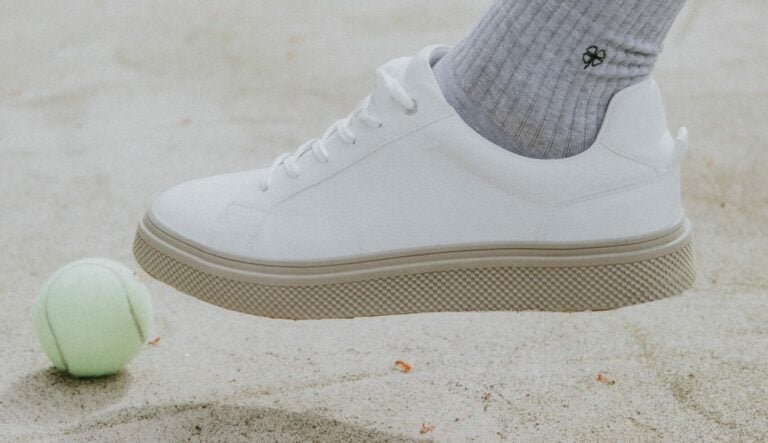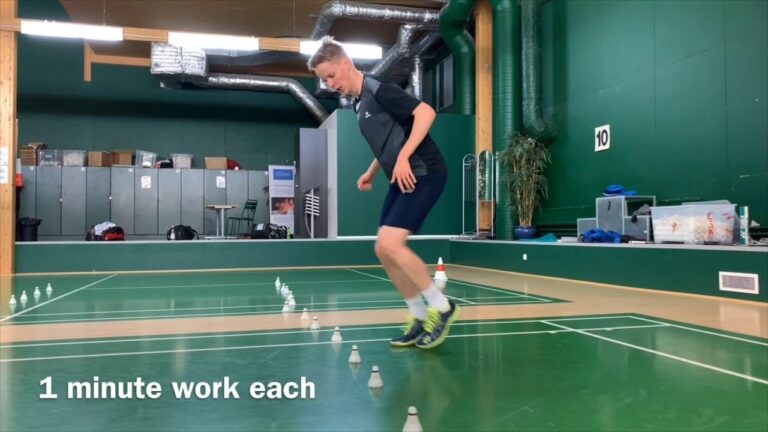In this article, we’ll tell you everything you need to know about the four different types of serves in badminton.
Having knowledge of all these serves will help you mix things up on court. By knowing these different serves the other player will never be sure of what to expect from you!
Key Takeaways
- There are four most common types of serves in badminton: low serve, high serve, flick serve, and drive serve.
- A low serve might be effective against someone standing close to the backline or anyone tall and aggressive,
- A high serve can help you clinch a point in singles,
- Drive serves should be sparingly used against opponents standing too close to the net and those with a weaker defence.
| Serve Type | Benefit of serve |
|---|---|
| Low serve | A low serve will limit an aggressive or tall player’s ability to launch an unplayable return due to the sheer agility required to react. |
| High serve | By forcing the opponent to rush to the back end of their court, the high serve requires your opponent to exert extra energy to produce an adequate return — typically a clear. |
| Flick serve | You can use the flick serve to surprise your oppenent by flicking the shuttlecock over their head, and it is most effective when the reciever is standing too close to the net. |
| Drive serve | The drive serve is great at catching your opponent off guard as it is a very fast serve intended to hit your opponent. |
Badminton Low Serve
The badminton low serve is when the shuttlecock barely crosses the net and lands right next to the short service line.
A low serve could prevent the opponent from attacking, while also limiting their options regarding the return shot. Also causing your opponent to bend over, exposing the entire court area on their backside for you to target.
When attempting a low serve, make sure to keep the shuttlecock as close to the net as possible. Otherwise, if the serve is too loopy, it will give the opponent ample time to smash a net kill.
When to Launch a Low Serve?
Low serves are mostly used in doubles games, as the service area in doubles is much shorter than in singles, making it difficult for the serving team to garner the benefits of a high serve (explained below).
Although, you can still launch a low serve in a singles game, especially when your opponent is tall or aggressive. A low serve will limit their ability to launch an unplayable return.
Badminton High Serve
The badminton high serve is meant to travel high and land deep into the opponent’s backcourt, in the furthest corner.
The high serve should hit its peak height when the shuttlecock is right on top of the receiver’s head. Then dropping sharply as it reaches close to the back service boundary.
To execute a perfect high service, start by placing all your weight on your back foot. Then, just as you’re about to hit the shuttlecock, shift your weight to your front foot. This will help you achieve a full swing and transfer maximum potential energy to your shot.
Remember, it is extremely difficult if not outright impossible to deliver a high serve using nothing but wrist strength. You have to use the above technique to execute a proper and effective forehand high serve.
When to Launch a High Serve?
High serves are mostly used in singles. By forcing the opponent to rush to the back end of their court, these serves require them to exert extra energy to produce an adequate return.
A high serve can also be an effective weapon against a short player. It’s also useful against players who don’t have enough muscle strength to clear the net.
Badminton Flick Serve
A badminton flick serve is a quick and aggressive serve that is meant to cross over the opponent and land right before the far service line.
The goal of the flick serve is to deceive your opponent by injecting power into your serve at the last moment using nothing but your wrist and thumb strength.
While both of them look similar on paper, there are two major differences between a flick serve and a long serve.
Unlike the low serve, which has a low trajectory, the flick serve goes in a straight line above the head of the receiver. Furthermore, both services borrow power from your wrist and thumb.
When to Launch a Flick Serve?
A flick serve should ideally be your weapon of choice in doubles games, since the receiver is more likely to stand near the front service line.
You can also use a flick serve when you notice that the receiver is standing too close to the net in anticipation of a low serve. Another possible scenario is when you sense your opponent is slow to react.
Badminton Drive Serve
A drive serve strikes the perfect balance between low and flick serves.
Just like a low serve, it is meant to barely cross the net, before landing right behind when your opponent is standing. And just like a flick serve, a drive serve is launched using the strength of your wrist.
The goal of the drive serve is to catch the opponent off-guard, making sure that the shuttlecock reaches their body before they have time to react. Its flat trajectory and fast speed make this possible.
However, before you launch a drive serve, check out the receiver’s body language. If it seems to you that they are ready for a fast and flat serve, choose any of the three serves mentioned above.
When to Launch a Drive Serve?
A drive serve should be used against opponents with a longer response time or those with a weaker defense. These include players who are still learning the ropes of badminton or those who have returned to the quiet after a lengthy time on the sidelines.
Having said that, be wary of overusing the drive serve. That is because a ready and poised receiver won’t find it much difficult to launch a killer return on a drive serve.







